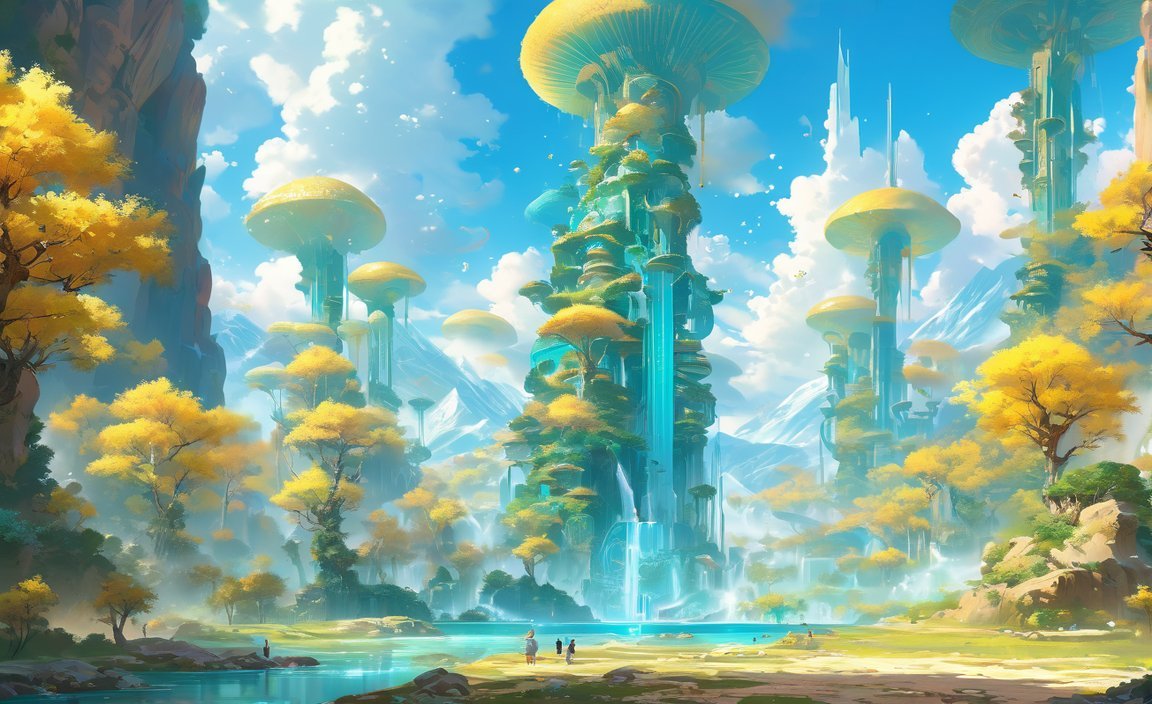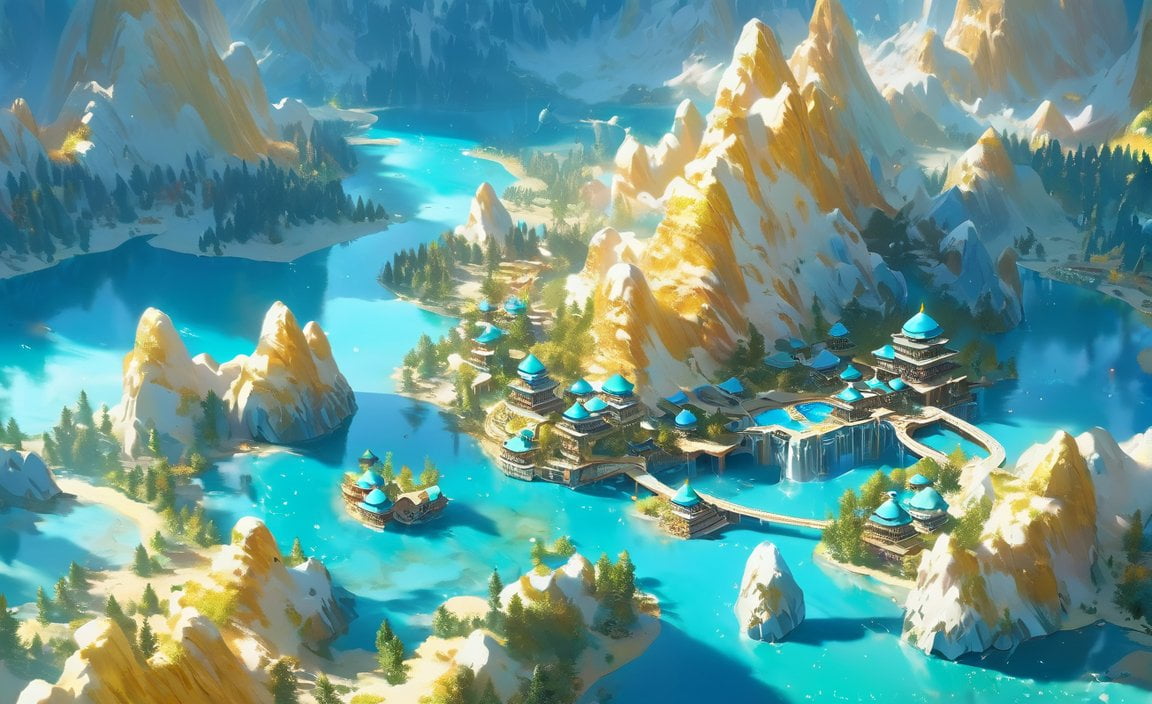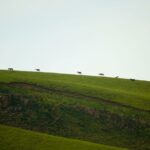Discover Kazakhstan: Unveiling Intriguing Fun Facts! Embark on a thrilling journey through the enchanting land of Kazakhstan as we reveal fascinating tidbits about this hidden gem. From its rich history to its vibrant traditions, this Central Asian country has a wealth of surprises waiting to be unveiled. Join us as we delve into the lesser-known aspects of Kazakhstan, exploring its unique landscapes, captivating traditions, and awe-inspiring landmarks. Get ready to be captivated by the allure of Kazakhstan as we take you on this exhilarating adventure of discovery!

Key Takeaways:
- Kazakhstan is the 9th largest country in the world but has one of the lowest population densities.
- It shares the longest border with Russia, stretching over 7,000 km.
- Kazakhstan is the largest landlocked country in the world, with no access to the open sea.
- The country is ethnically diverse, representing more than 120 nationalities.
- Kazakhstan was the first country to domesticate and ride horses.
- Lake Balkhash, located in Kazakhstan, is one of the largest lakes in the world and consists of both saltwater and freshwater.
- Kazakhstan has five UNESCO World Heritage sites, including the Mausoleum of Khoja Ahmed Yasawi and the Petroglyphs within the Archaeological Landscape of Tamgaly.
- The national drink of Kazakhstan is horse milk, also known as kumis.
Kazakhstan Fun Facts
Welcome to a world of remarkable discoveries! Kazakhstan, a land of captivating wonders, holds hidden treasures that will leave you amazed. From its vast landscapes to its rich cultural heritage, this diverse country is a tapestry of unique experiences. Get ready to delve into the enchanting world of Kazakhstan fun facts!
A Land of Immense Size and Scarcely Populated
Did you know that Kazakhstan is the 9th largest country in the world by land area? Spanning across expansive territory, this incredible nation covers vast stretches of land, making it a true behemoth. However, despite its immense size, Kazakhstan has one of the lowest population densities globally, with only six people per square mile. Imagine having all that space to explore and roam freely!
Where Borders Stretch for Thousands of Kilometers
Prepare to be astounded by Kazakhstan’s border with Russia! This remarkable country boasts the longest border in the world, stretching over a mind-boggling 7,000 kilometers. Imagine tracing this border line across various landscapes, from barren deserts to lush green valleys. Such a vast frontier speaks volumes about the unique relationship between these neighboring nations.
A Journey to the Heart of the Continent
Have you ever wondered which country holds the title for the largest landlocked nation in the world? Look no further than Kazakhstan! Situated in the heart of the continent, this extraordinary country has no access to the open sea. Explore its vast landscapes, from the mesmerizing Altai Mountains to the mysterious Kazakh Steppe, and discover the hidden wonders that lie within.
A Mosaic of Cultures and Nationalities
Venture into the realm of diversity with Kazakhstan, as it proudly represents over 120 different nationalities. This rich tapestry of cultures combines traditions, languages, and customs to create a harmonious blend that truly captivates the senses. Embark on a cultural journey and revel in the multicultural heritage that Kazakhstan has to offer.
Riding the Winds of History
Prepare to be amazed by the fact that Kazakhstan is the birthplace of horse domestication! This fascinating country holds the honor of being the first in the world to domesticate and ride these majestic creatures. Immerse yourself in the rich equestrian history that permeates Kazakhstan’s culture and take a gallop through time.
Enter the Realm of Contrasting Waters
Dive into the enchanting world of Lake Balkhash, one of the largest lakes in the world. What makes it truly remarkable is its composition—half saltwater and half freshwater. Picture yourself standing on the shores of this incredible lake, where the boundaries between two opposing elements blur, creating a mesmerizing spectacle.
Unlocking History’s Secrets
Prepare to be awe-struck as you delve into Kazakhstan’s UNESCO World Heritage sites. Discover the Mausoleum of Khoja Ahmed Yasawi, a masterpiece of medieval architecture that stands as a testament to the country’s cultural heritage. Marvel at the Petroglyphs within the Archaeological Landscape of Tamgaly, a captivating site adorned with ancient rock carvings that whisper stories of civilizations past. Uncover the secrets of these fascinating heritage sites and let the echoes of history guide your exploration.
A Toast to Tradition
No journey through Kazakhstan would be complete without a taste of its national drink, kumis. This unique beverage, also known as horse milk, holds a special place in Kazakh culture and traditions. Embrace the taste of tradition and savor every sip of this fascinating drink that has been cherished for centuries.
Now that you’ve uncovered these intriguing fun facts about Kazakhstan, it’s time to embark on your own adventure. Explore the rich cultural tapestry, venture into the untamed wilderness, and immerse yourself in the captivating wonders that await in this remarkable country. Prepare to be enchanted by Kazakhstan, where every step reveals a new adventure.
Altitude in Kansas is a fascinating topic to explore. Discover more about it by clicking here.
If you’re a fan of hiking and geological wonders, you must check out Bryce Canyon Thor’s hammer. Click here to unveil the beauty and majesty of this natural marvel.
Curious about Togo? Unearth interesting facts about this captivating country by clicking here.
The Philippines is a country of diverse culture and breathtaking landscapes. Want to know more? Click here to discover fascinating facts about the Philippines.
Kazakhstan is known for its nomadic heritage and traditional yurt dwellings.
Kazakhstan, a country in Central Asia, holds a rich nomadic heritage intertwined with its traditional yurt dwellings. These iconic structures serve as a symbol of Kazakh culture and are deeply ingrained in the country’s history. Let’s delve deeper into the fascinating world of Kazakhstan’s nomadic heritage and traditional yurt dwellings.
Unveiling the Nomadic Lifestyle
For centuries, Kazakhs embraced a nomadic lifestyle, traversing the vast steppes of Central Asia in search of grazing land for their livestock. These nomadic communities found respite and shelter in a unique dwelling known as the yurt. The yurt, also spelled as “ger” in some regions, became an integral part of their everyday life.
A Home that Embraces Mobility
The design of the yurt perfectly suits the nomadic lifestyle. It is easily assembled, disassembled, transported, and rebuilt, allowing the Kazakhs to effortlessly adapt to their surroundings. Structure-wise, the yurt consists of a wooden circular frame covered with felt and braided with ropes, ensuring sturdiness and durability.
Preserving Intangible Cultural Heritage
The yurt holds immense cultural value for the Kazakh people. In acknowledgment of its significance, the yurt-making techniques and traditional knowledge associated with crafting these dwellings have been recognized by UNESCO as part of Kazakhstan’s intangible cultural heritage. This recognition reflects the importance of preserving and showcasing this unique aspect of Kazakh culture to the world.
A Modern-Day Connection to Tradition
While many Kazakhs have transitioned to modern housing, yurts are still utilized by nomadic communities in rural areas of Kazakhstan. These vibrant communities have retained their nomadic roots and continue to embrace the simplicity and practicality of yurt living. For them, the yurt is more than just a dwelling; it represents a deep connection with their heritage and a sense of unity with the cosmos.
Key Takeaways:
- The yurt is a traditional nomad’s house and symbolizes Kazakh culture.
- Kazakhs historically lived in yurts during their nomadic lifestyle and in more permanent dwellings during the winter.
- Yurts are easily assembled, transported, and rebuilt, offering mobility and adaptability.
- Constructed with a wooden circular frame covered with felt and braided with ropes, yurts are sturdy and durable.
- The yurt is an important part of Kazakhstan’s intangible cultural heritage, recognized by UNESCO.
- Nomadic communities in rural areas of Kazakhstan still utilize yurts, maintaining a connection to their traditions and heritage.
Sources:
– Central Asia Guide
– UNESCO Intangible Heritage
Kazakhstan is rich in natural resources, including oil, gas, and minerals.
Kazakhstan, a country nestled in the heart of Central Asia, boasts a wealth of natural resources that have played a significant role in shaping its economy and international standing. From abundant minerals to fossil fuels and renewable energy potential, Kazakhstan stands as a hub of natural resource wealth. Let’s dive deeper into some of the major treasures that lie within this fascinating nation.
Major Natural Resources of Kazakhstan
- Chromite, Wolfram, Lead, Zinc, Manganese, Silver, and Uranium: Kazakhstan ranks among the world’s leading countries in terms of reserves for these minerals[^1^]. The country’s underground reserves hold immense value and play a crucial role in both domestic consumption and international trade.
- Bauxite, Copper, Gold, Iron Ore: Kazakhstan also possesses significant reserves of these minerals[^1^]. The thriving mining industry extracts these resources, contributing to the country’s economic growth.
- Coal, Oil, Natural Gas: Kazakhstan is a major producer of fossil fuels, including coal, oil, and natural gas. The country’s oil reserves are estimated to be the 11th largest globally[^1^]. With massive deposits scattered across the vast landscape, Kazakhstan has the potential to become a leading oil exporter in the region.
- Renewable Energy Potential: While fossil fuels dominate the energy sector, Kazakhstan also harnesses the power of renewable resources. The country has significant potential for wind, solar, hydro, and biomass energy[^2^]. As the world increasingly shifts towards sustainable energy solutions, Kazakhstan is positioning itself to leverage its renewable potential and contribute to a greener future.
- Arable Land: In addition to minerals and energy resources, Kazakhstan boasts vast stretches of fertile land. Approximately 10.89% of the country’s land area is classified as arable[^3^]. This abundance of arable land provides favorable conditions for agricultural activities and contributes to the country’s food security.
- Tourism: Beyond its mineral and energy wealth, Kazakhstan treasures its natural landscapes, captivating visitors from around the globe. The country’s breathtaking scenery serves as a valuable resource, attracting over 6.5 million tourists in 2016 alone[^4^]. With attractions such as the majestic Lake Balkhash and UNESCO World Heritage sites like the Mausoleum of Khoja Ahmed Yasawi and the Petroglyphs within the Archaeological Landscape of Tamgaly, Kazakhstan offers an enchanting destination for nature enthusiasts and history lovers alike.
Key Takeaways:
- Kazakhstan ranks among the world’s leaders in reserves for minerals such as chromite, wolfram, lead, zinc, manganese, silver, uranium, and more.
- The country also possesses significant reserves of bauxite, copper, gold, and iron ore.
- Kazakhstan is a major producer of fossil fuels, including coal, oil, and natural gas, with the potential to become a leading oil exporter in the region.
- Significant renewable energy potential exists in Kazakhstan, including wind, solar, hydro, and biomass resources.
- The abundant arable land in Kazakhstan provides favorable conditions for agricultural activities.
- Tourism is thriving in Kazakhstan, with millions of visitors attracted to its beautiful landscapes and UNESCO World Heritage sites.
Sources:
[^1^]: World Atlas. “What Are The Major Natural Resources Of Kazakhstan?”
[^2^]: International Energy Agency (IEA). “Current Energy Resources in Kazakhstan and the Future Potential.”
Exploring the Diverse Landscape and Nomadic Heritage of Kazakhstan
Kazakhstan, the ninth-largest country in the world by land area, is a treasure trove for nature lovers and history enthusiasts. Its diverse landscape, ranging from vast steppes to snow-capped mountains and beautiful lakes, offers a unique travel experience. Let’s delve into the fascinating facts that make Kazakhstan a captivating destination.
Kazakhstan’s Diverse Landscape
Kazakhstan’s landscape is a symphony of natural beauty. The country is home to the magnificent Tian Shan mountains, with their snow-capped peaks dominating the horizon. These majestic mountains not only offer awe-inspiring views but also provide excellent opportunities for hiking, trekking, and exploring unique flora and fauna.
But Kazakhstan’s natural wonders don’t end there. The country also boasts endless desert steppes, as seen in places like Atyen Emel National Park. These vast expanses of desert showcase the arid beauty of the region and offer a sense of tranquility as you wander through the untouched wilderness.
And let’s not forget the stunning lakes that dot Kazakhstan’s landscape. From the world-famous Lake Balkhash to the picturesque Kolsai Lakes, these bodies of water captivate visitors with their crystal-clear waters and breathtaking surroundings. Whether you’re a nature enthusiast, a wildlife lover, or simply seeking serenity, Kazakhstan’s lakes will leave you in awe.
Embracing Nomadic Heritage
Kazakhstan has a rich nomadic heritage deeply rooted in its history. The Indigenous Kazakh culture comes alive in the rugged, vast interior of the country. As you journey through the majestic steppes and witness horses and camels grazing freely, you can’t help but feel connected to the country’s nomadic roots.
Nomadic communities in rural areas of Kazakhstan still embrace their traditional way of life, using yurts as their dwellings. These portable, circular tents hold deep cultural significance and reflect the adaptability of the Kazakh people to their surroundings. The yurt-making techniques and traditional knowledge have even been recognized by UNESCO as part of Kazakhstan’s cultural heritage.
Key Takeaways:
- Kazakhstan’s diverse landscape encompasses vast steppes, snow-capped mountains, and beautiful lakes.
- The country’s prominent natural features include the Tian Shan mountains and endless desert steppes.
- Kazakhstan’s lakes, such as Lake Balkhash and the Kolsai Lakes, offer stunning beauty and tranquility.
- The nomadic heritage of Kazakhstan is an integral part of its cultural identity.
- Traditional yurts serve as dwellings for nomadic communities, reflecting a deep connection to their heritage.
Citations:
– Wikipedia. (source url)
– Unusual Traveler. (source url)

FAQ
Q1: What are some fun facts about Kazakhstan?
A1: Some fun facts about Kazakhstan include being the ninth largest country by area in the world, having the longest border with Russia, being the largest landlocked country, and having diverse ethnicities. Additionally, Kazakhstan is the first country to domesticate and ride horses, has Lake Balkhash which is half salt water and half fresh water, and has five UNESCO World Heritage sites. The national drink of Kazakhstan is horse milk, also known as kumis.
Q2: How ethnically diverse is Kazakhstan?
A2: Kazakhstan represents over 120 nationalities, making it extremely ethnically diverse.
Q3: What are some unique natural landmarks in Kazakhstan?
A3: Kazakhstan is home to Lake Balkhash, one of the largest lakes in the world with both salt water and fresh water. The country also has five UNESCO World Heritage sites, including the Mausoleum of Khoja Ahmed Yasawi and the Petroglyphs within the Archaeological Landscape of Tamgaly.
Q4: What is the national drink of Kazakhstan?
A4: The national drink of Kazakhstan is horse milk, also known as kumis.
Q5: What are some major natural resources found in Kazakhstan?
A5: Kazakhstan is rich in natural resources. Some major resources include reserves of minerals like chromite, wolfram, lead, zinc, manganese, silver, uranium, bauxite, copper, gold, and iron ore. The country is also a major producer of fossil fuels such as coal, oil, and natural gas, and it has significant potential for renewable energy sources.
- Unveiling Bernhard Caesar Einstein’s Scientific Achievements: A Legacy in Engineering - July 15, 2025
- Uncover who is Jerry McSorley: CEO, Family Man, Business Success Story - July 15, 2025
- Discover Bernhard Caesar Einstein’s Scientific Contributions: Unveiling a Legacy Beyond Einstein - July 15, 2025















